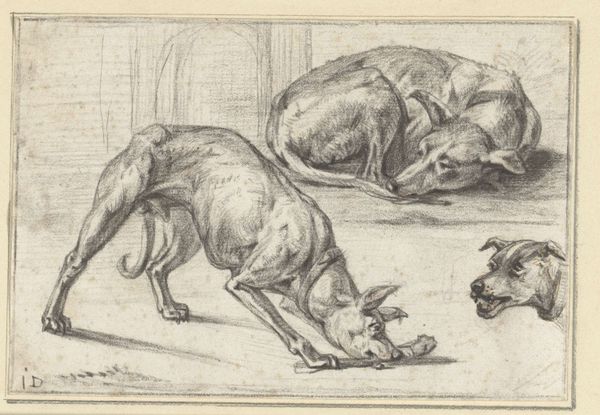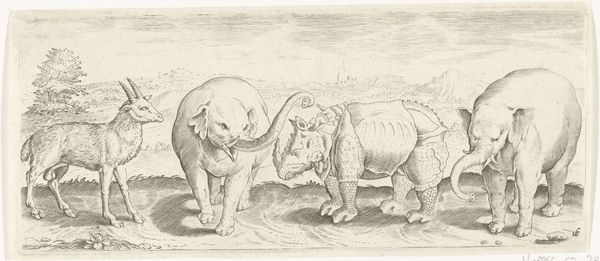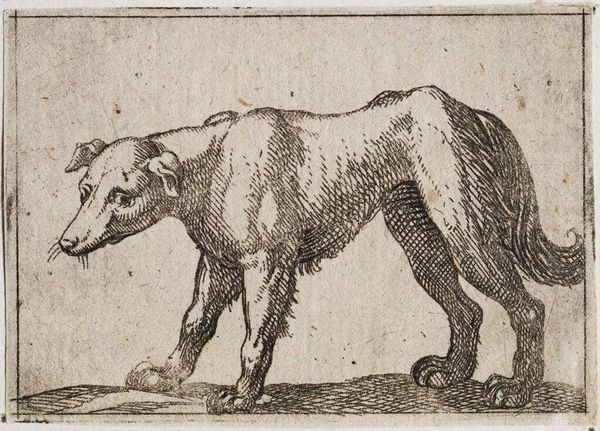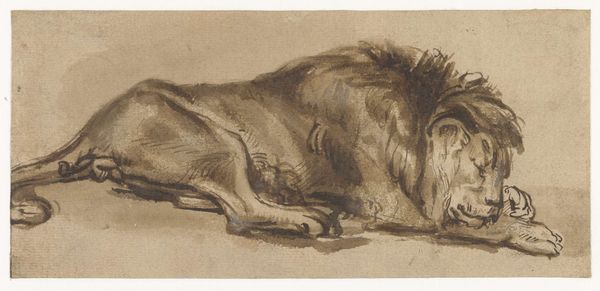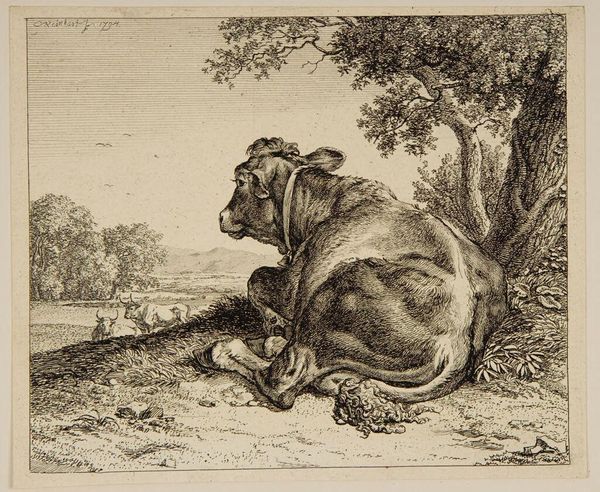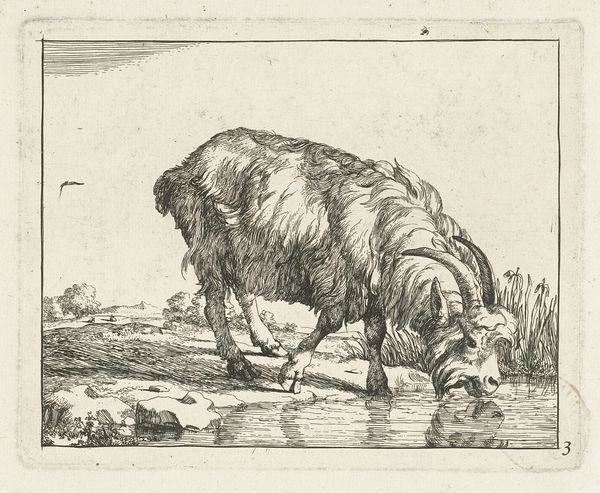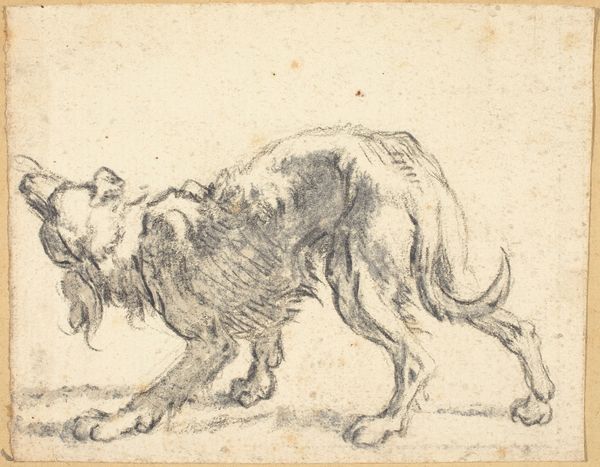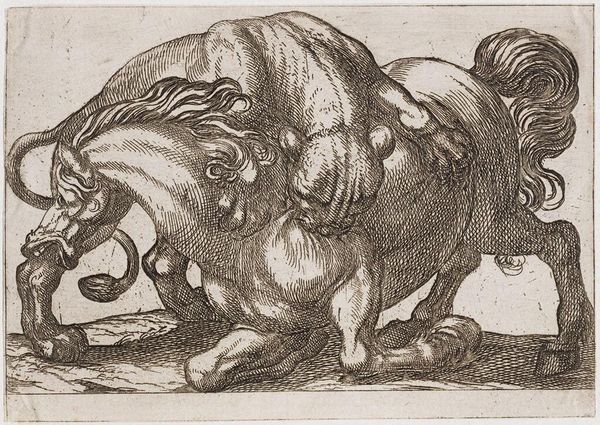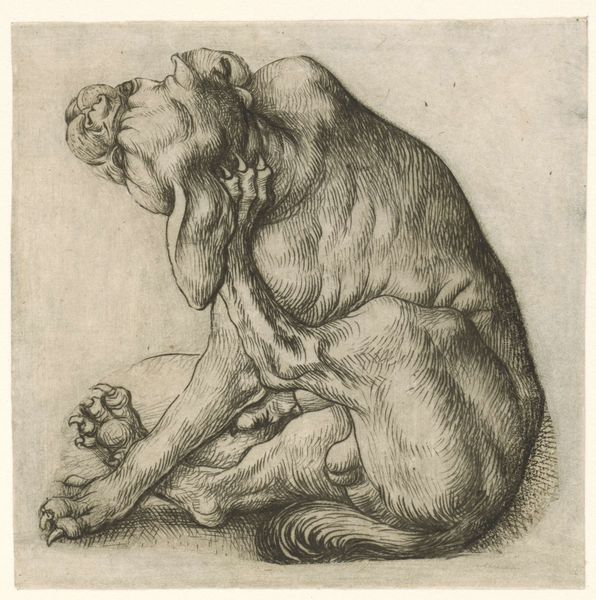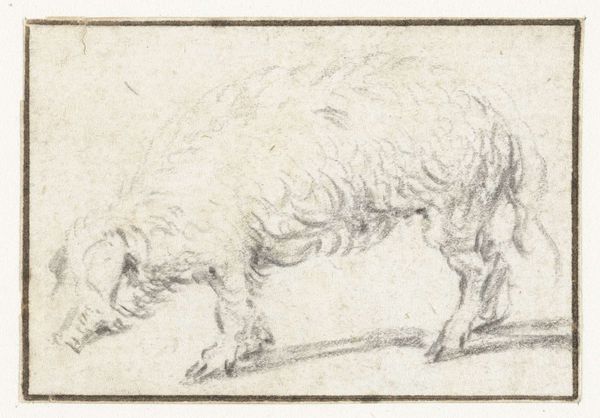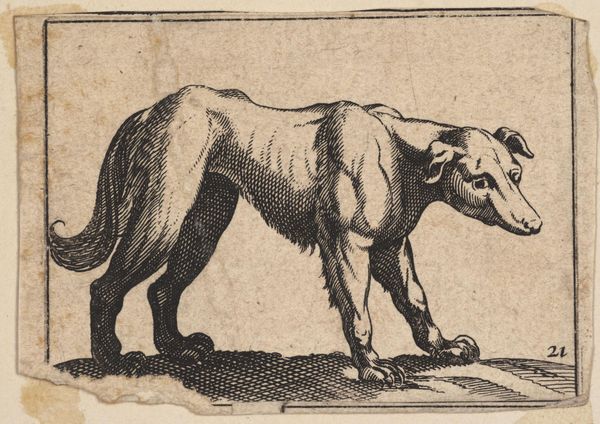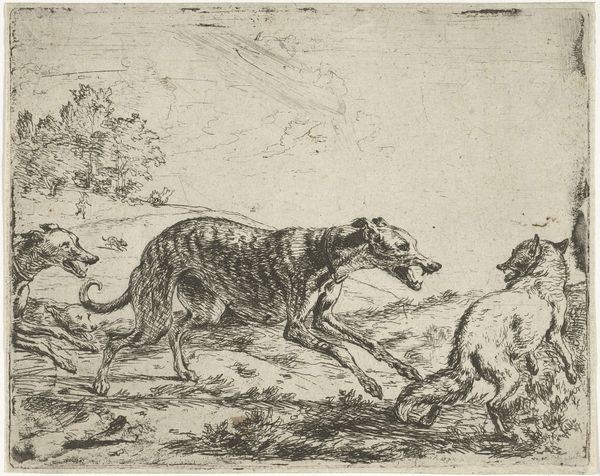
Copyright: Public Domain: Artvee
Curator: This is "Elephant in a Landscape," a drawing in ink and charcoal by Giovanni Domenico Tiepolo, dating from sometime between 1727 and 1804. Editor: It strikes me immediately as melancholic, almost absurd. The monochrome palette and the slightly awkward pose of the elephant lend it a sort of tragicomic air. Curator: The use of ink and charcoal, particularly the way Tiepolo handles the tonality, speaks to the socio-economic context of drawing as a means of readily available and reproducible form, which democratized art-making practices. This work, therefore, invites us to question power structures through representational strategies of access. Editor: Absolutely, the materials themselves speak to a certain accessibility, contrasting perhaps with the exoticism of the subject. But look at the way the wash is applied. It's almost careless in places, yet precise in others, defining form with surprising efficiency. One could speculate on the ready availability of the materials. Curator: I see the application of the medium and technique as strategies of power embedded within a colonial framework. The representation of exotic animals, such as the elephant, carries socio-political implications indicative of empire-building. Representations such as this one were commodified and often acted as projections of Western hegemony over non-Western regions, solidifying Western cultural supremacy. Editor: That’s an astute reading, especially in relation to consumption. Still, the rendering itself feels so… observational. One almost imagines Tiepolo studying the beast directly, grappling with the material qualities of ink and charcoal to capture its essence. It’s a very tactile process that produces a distinct final object, you can sense the grain of the paper under the layering of media, too. Curator: It's also essential to recognize how figuration in landscape becomes a visual trope used to negotiate relations between self and the Other within these power dynamics, especially with the social context around exploration in this period and the artist’s placement of the elephant in what feels like an exotic, faraway land. Editor: Indeed. Ultimately, regardless of the context, the drawing leaves us with a sense of wonder at the sheer mass of the animal and a certain appreciation for the artist’s skillful use of humble materials. Curator: And it provides us a window through which to examine representation as a colonial discourse.
Comments
No comments
Be the first to comment and join the conversation on the ultimate creative platform.
